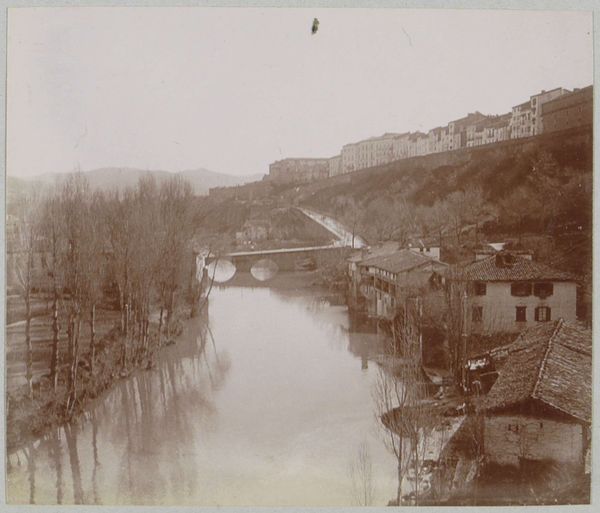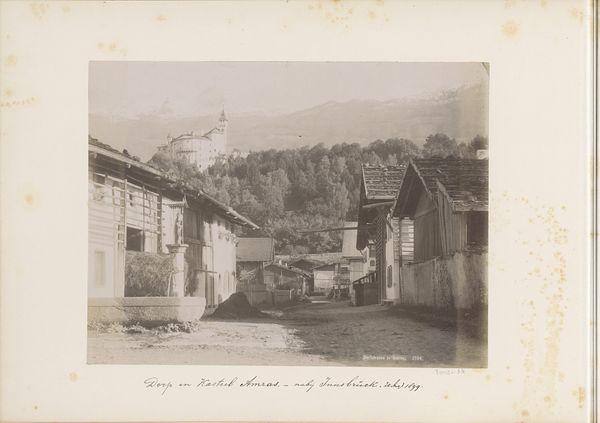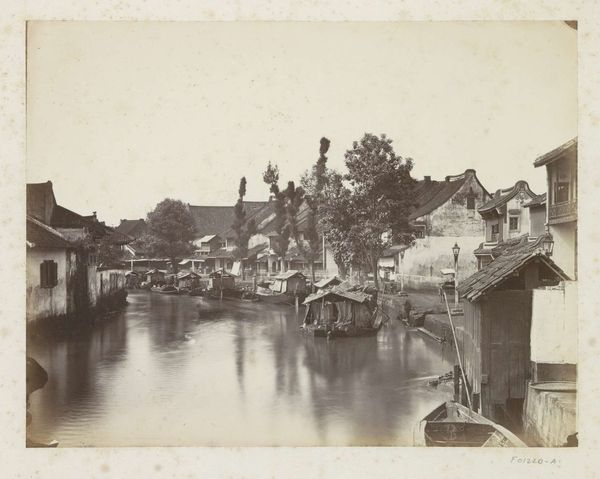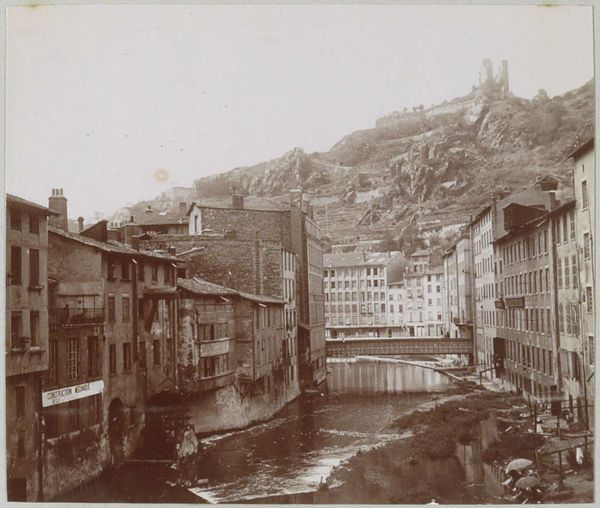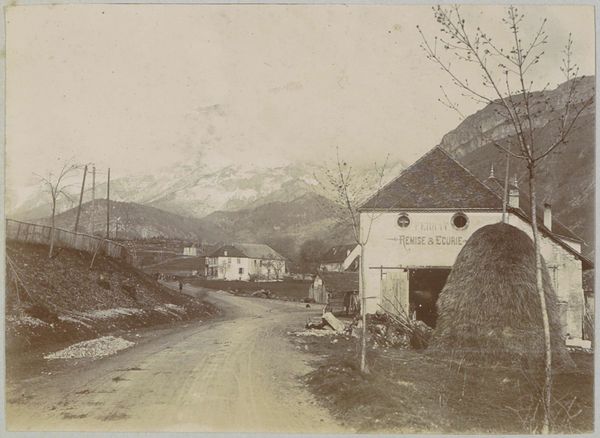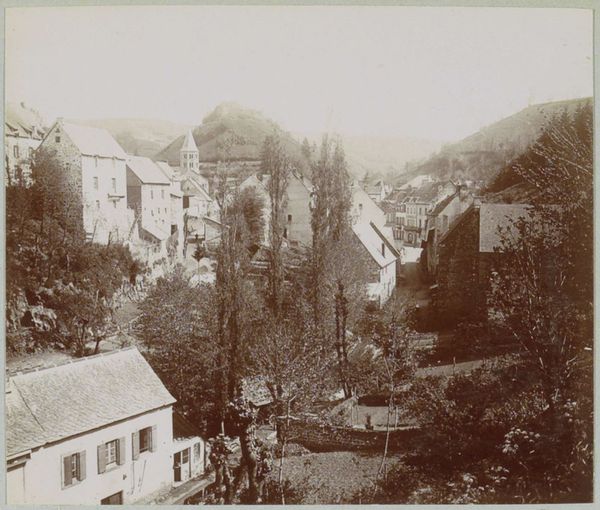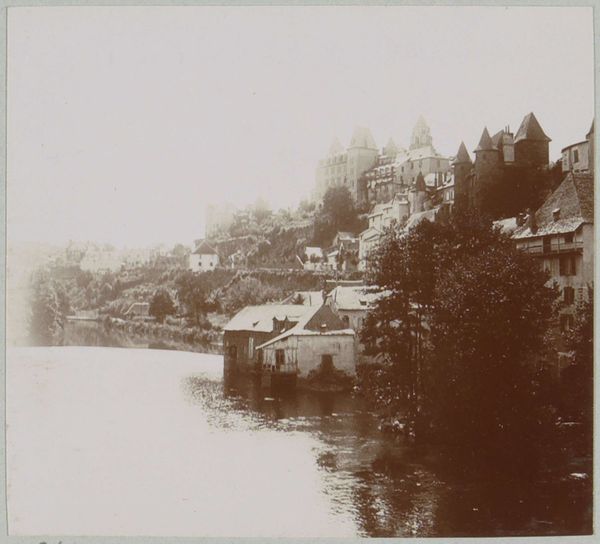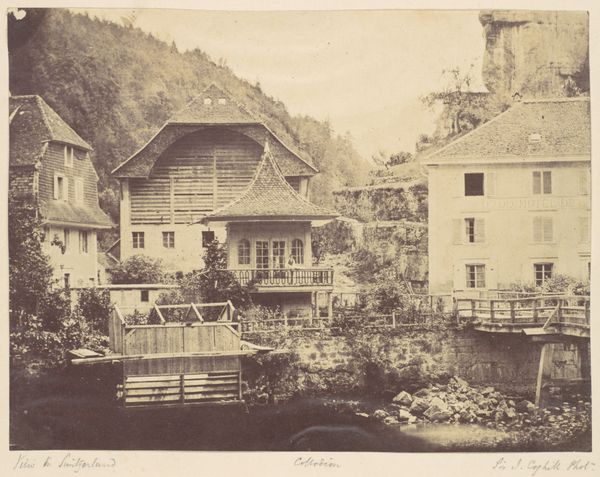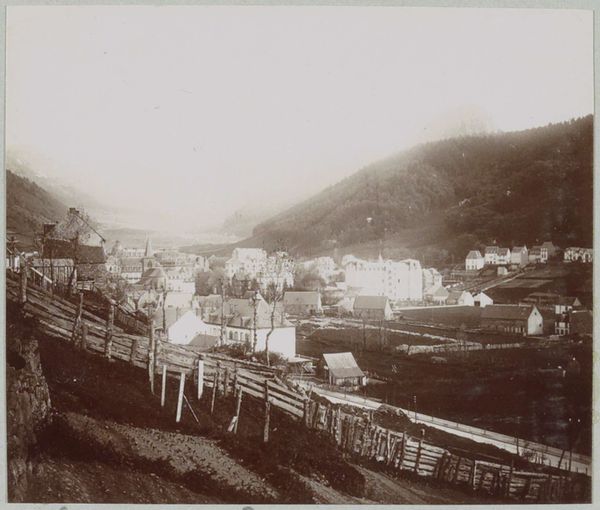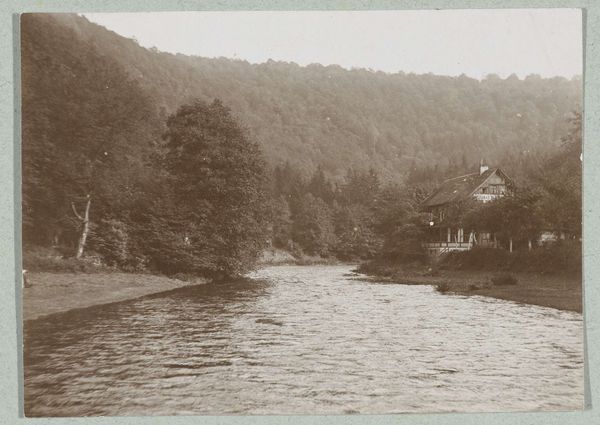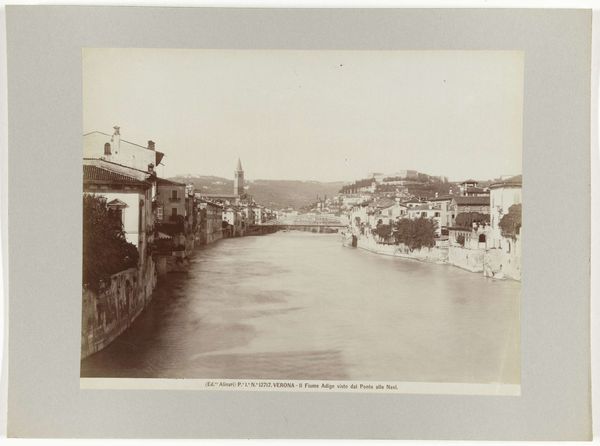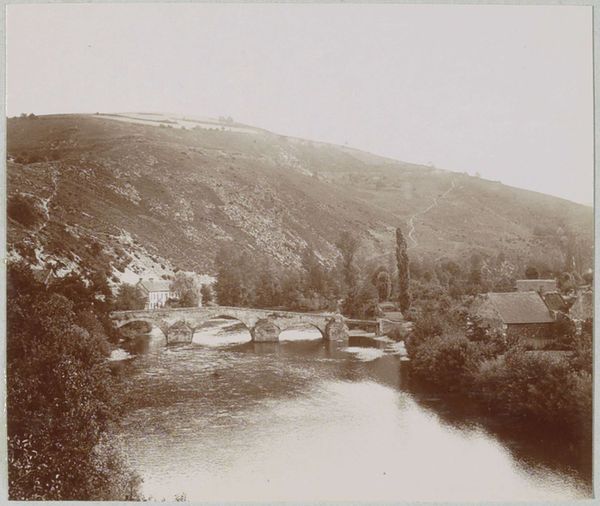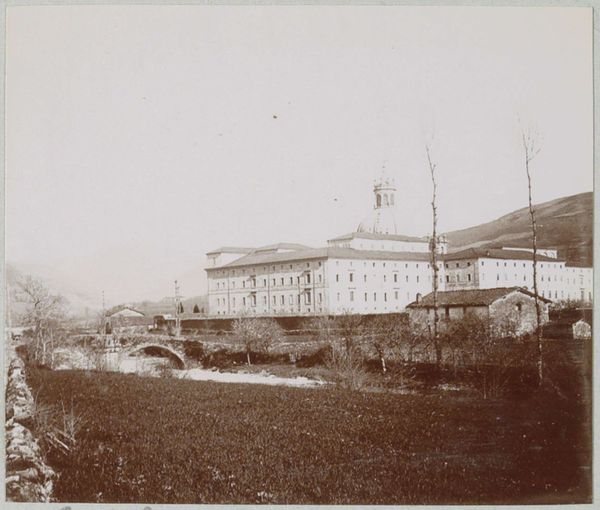
daguerreotype, photography
#
countryside
#
landscape
#
daguerreotype
#
agricultural
#
photography
#
19th century
#
watercolour illustration
#
genre-painting
#
scenic spot
#
realism
Dimensions: height 169 mm, width 219 mm
Copyright: Rijks Museum: Open Domain
Curator: I find this early French landscape photograph remarkably compelling. Known as "Landschap in Frankrijk," and dating from between 1850 and 1860, the image appears to be a daguerreotype. Editor: There’s a stillness to it, isn't there? The monochromatic palette lends it a sense of quietude. It's pastoral but in a restrained, almost melancholic way. Curator: The subject matter reflects a specific valorization of rural life common in mid-19th-century art and society, a reaction to the rapid industrialization happening in urban centers. Photography at this time provided a new means of representing these "simple" lives, yet it also exoticized them. Editor: And who is afforded the privilege to even have their story told? While these images of "simple" life do serve to document the history, where does this leave agency in marginalized communities, especially when considering class distinctions and who's behind the camera? Do you see a tension here between representing rural life and perhaps, romanticizing it? Curator: Precisely. Photography, despite its supposed objectivity, was—and still is—subject to the photographer's biases and the prevailing ideologies of the time. There’s a real tension between its documentary function and its potential to shape perceptions about the countryside. Note how the bridge physically and metaphorically connects two distinct spaces – the more manicured path on the left and the working building on the right. Editor: That brings into focus how institutions chose which pieces would become historical artifacts. In this context, why were scenes of the rural population being given importance? Curator: In many ways, landscape art like this reinforced existing social hierarchies and even power structures. It depicted the rural population, but it did so through a specific lens that served to uphold the status quo. These early photographs tell us about how those in power wanted the world to see, not always what was necessarily there. Editor: Thinking critically about these kinds of archival images allows us to understand the complicated ways images shape our social narratives. This daguerreotype reminds me how crucial it is to analyze images from the past, particularly in this genre. Curator: Agreed. Considering its history within the development of photographic art alongside the values and political currents that gave rise to it brings added resonance to this photograph, prompting essential inquiries concerning representation.
Comments
No comments
Be the first to comment and join the conversation on the ultimate creative platform.
